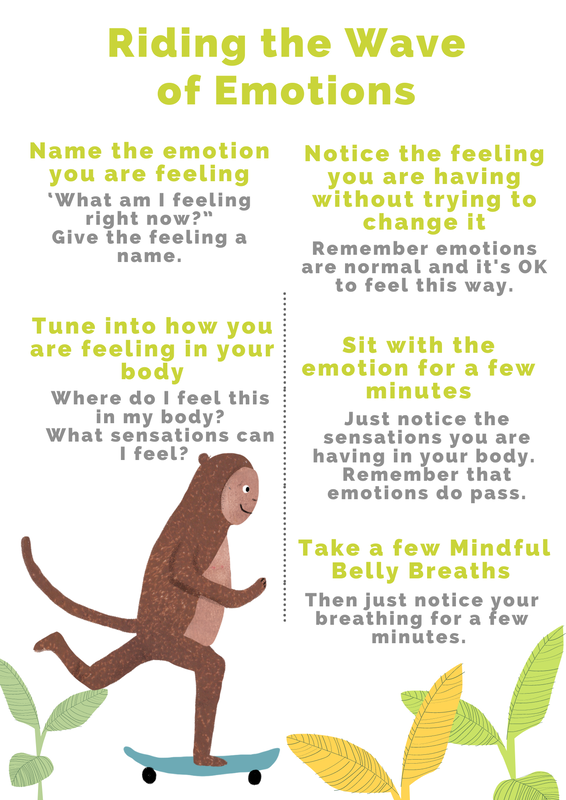|
Regular Mindfulness practice improves our ability to understand and use emotions effectively. The more we are aware of our emotional state, the more we have the choice to manage these states. We begin over time to notice the subtleties and nuances of emotions and feeling states. The more we practice being Mindful of our inner landscape, the more we can recognise feelings as they arise. We can then bring a healthy balance to it, not allowing the emotions to overwhelm us, dismissing it or being afraid of it.
According to Peerayuth Charoensukmongkol (2015), Mindfulness helps manifest emotional intelligence in three major ways:
This takes practice, awareness and a dedication to personal development which continues all through our lives. How do you manage your own strong emotions? Do you embrace them (which can be hard !) or do you dismiss them, distract yourself or diminish the feeling? Think about for a moment what gets in the way of just being with your strong emotions. Why is it that we find it hard to connect to strong emotions at times? We can judge and resist the emotions for a range of reasons such as:
One way to turn towards difficult emotions is to notice how it feels in the body. This is different to analysing why we feel a certain way or playing over the events in our minds of what happened to trigger the emotion. Turning towards difficult emotions means just noticing with curiosity and non-judgement. How am I feeling in my body right now? What can I notice? Is it changing or staying the same? Is there just one sensation or a few? What is the quality of the sensation? It can be helpful to recognise that the emotion you are feeling is only a temporary state and not your total self. If you feel completely overwhelmed by an emotion, bring your attention to your breath, to your body and focus on what is happening now with the body. This helps to be grounded in the experience. Riding the waves of emotion As Jon Kabat-Zinn says ‘You can’t stop the waves, but you can learn to surf’. This is what we are aiming to do – surf the strong emotions. Imagine standing in front of a rough ocean with large waves coming towards you. You can stand there and try to stop the waves coming at you and dumping you, or you can turn around and surf the waves in. The waves may be large and daunting, but we know that we are more likely to have a smoother ride by body surfing them in rather than being dumped. “Allow yourself to feel whatever you are feeling. Let go of the labels. Just feel what you are feeling, all the while cultivating moment-to-moment awareness, riding the waves of "up" and "down," "good" and "bad," weak" and "strong," until you see that they are all inadequate to fully describe your experience. Be with the experience itself. Trust in your deepest strength of all: to be present, to be wakeful.” Jon Kabat-Zinn Self-Validation Self-validation is being able to accept your own feelings, thoughts, and internal experience. This does not necessarily mean that all your thoughts or feelings may be justified but we can validate how we feel at that time. If we judge our feeling state or feel ashamed for feeling emotions, this will only increase the emotional distress and discomfort. It is vital to validate both thoughts and emotions to be able to manage them. Acceptance & Emotions Using the attitude of acceptance is also important to note when managing emotions. As we learnt in the Peaceful Kids Training, using acceptance is extremely helpful in managing a difficult emotional experience. If we judge the experience and try to feel a different way that what we are, we usually make the emotional experience worse over time. Accepting that you have the emotion and knowing its ok to feel that emotion can help in managing it. ‘When you get emotional (feel emotional, not necessarily yet acting out) or have an overload of pressure, there are few to no neural transmissions to the prefrontal cortex. You lose the ability to think rationally or logically. Emotions cause physiological changes.’ Dr. Daniel Siegal, M.D.
6 Comments
|
|
PEACEFUL KIDS
|
© Wellbeing For Kids Pty. Ltd. All rights reserved. Suite 159 179 Queens Parade Clifton Hill VIC 3068 Australia [email protected] |

 RSS Feed
RSS Feed
